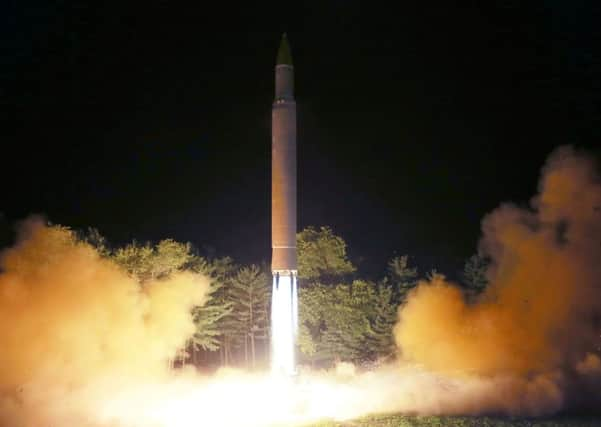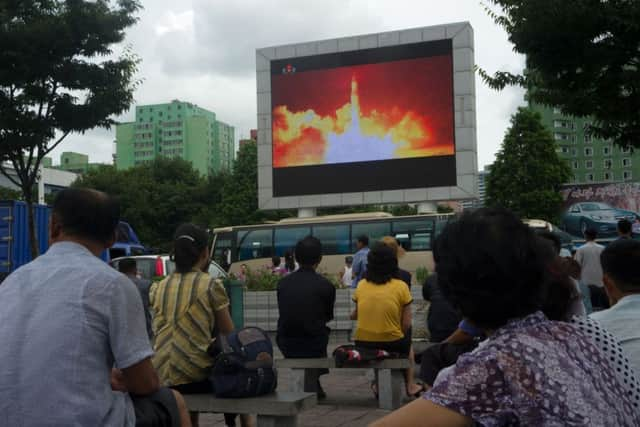North Korea: '˜All US mainland in missile range'


His comments came hours after the launch left analysts concluding that a wide swathe of the United States, including Los Angeles and Chicago, is now in range of North Korean weapons.
The Korean Central News Agency said Kim expressed “great satisfaction” after the Hwasong-14 missile reached a maximum height of 2,314 miles and travelled 620 miles before accurately landing in waters off Japan.
Advertisement
Hide AdAdvertisement
Hide AdThe agency said the test was aimed at confirming the maximum range and other technical aspects of the missile it says was capable of delivering a “large-sized, heavy nuclear warhead”.


Analysts estimated that the North’s first ICBM on July 4 could have reached Alaska, and said that the latest missile appeared to extend that range significantly.
Immediately after the launch, US and South Korean forces conducted live-fire exercises.
South Korean defence Minister Song Young-moo called for the deployment of strategic US military assets - which usually means stealth bombers and aircraft carriers - as well as additional launchers of an advanced US anti-missile system.


Japanese government spokesman Yoshihide Suga said the missile flew for about 45 minutes - about five minutes longer than the first. The missile was launched on a very high trajectory, which limited the distance it travelled, and landed west of Japan’s island of Hokkaido.
The KCNA quoted Kim as saying that the launch reaffirmed the reliability of the country’s ICBM system and an ability to fire at “random regions and locations at random times” with the “entire” US mainland now within range.
The agency said that the test confirmed important features of the missile system, such as the proper separation of the warhead and controlling its movement and detonation after atmospheric re-entry.
Kim said the launch sent a “serious warning” to the United States, which has been “meaninglessly blowing its trumpet” with threats of war and stronger sanctions, the KCNA said.
Advertisement
Hide AdAdvertisement
Hide AdThe North Korean flight data was similar to assessments by the United States, South Korea and Japan.
David Wright, a physicist and co-director of the global security programme at the Union of Concerned Scientists, said if reports of the missile’s maximum altitude and flight time were correct, it would have a theoretical range of at least 6,500 miles.
That means it could have reached Los Angeles, Denver or Chicago, depending on variables such as the size and weight of the warhead that would be carried atop such a missile in an actual attack.
US president Donald Trump issued a statement condemning the missile test as a threat to the world, and rejecting North Korea’s claim that nuclear weapons ensure its security.
